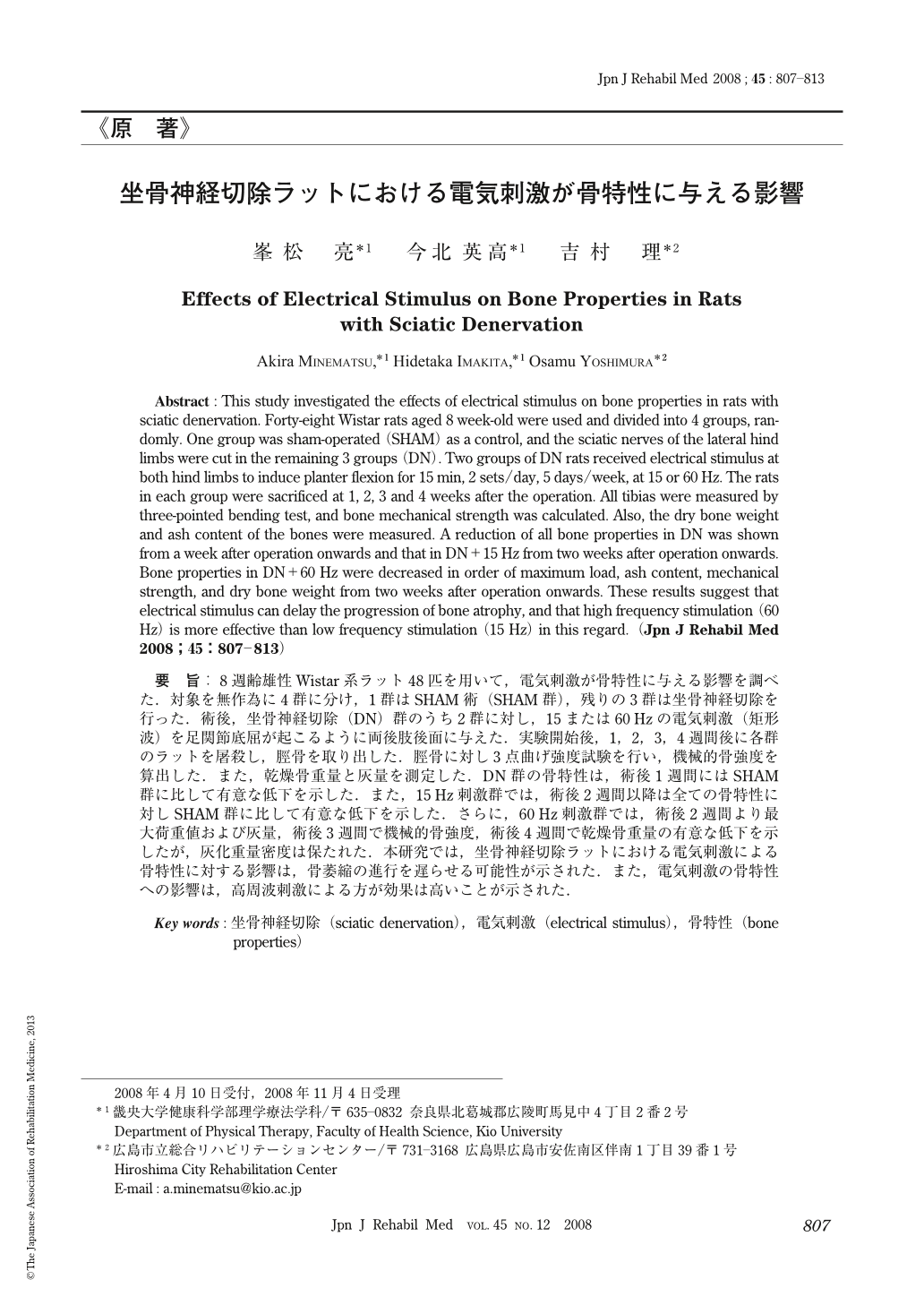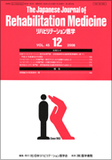Japanese
English
- 販売していません
- Abstract 文献概要
- 1ページ目 Look Inside
- 参考文献 Reference
要旨:8週齢雄性Wistar系ラット48匹を用いて,電気刺激が骨特性に与える影響を調べた.対象を無作為に4群に分け,1群はSHAM術(SHAM群),残りの3群は坐骨神経切除を行った.術後,坐骨神経切除(DN)群のうち2群に対し,15または60Hzの電気刺激(矩形波)を足関節底屈が起こるように両後肢後面に与えた.実験開始後,1,2,3,4週間後に各群のラットを屠殺し,脛骨を取り出した.脛骨に対し3点曲げ強度試験を行い,機械的骨強度を算出した.また,乾燥骨重量と灰量を測定した.DN群の骨特性は,術後1週間にはSHAM群に比して有意な低下を示した.また,15Hz刺激群では,術後2週間以降は全ての骨特性に対しSHAM群に比して有意な低下を示した.さらに,60Hz刺激群では,術後2週間より最大荷重値および灰量,術後3週間で機械的骨強度,術後4週間で乾燥骨重量の有意な低下を示したが,灰化重量密度は保たれた.本研究では,坐骨神経切除ラットにおける電気刺激による骨特性に対する影響は,骨萎縮の進行を遅らせる可能性が示された.また,電気刺激の骨特性への影響は,高周波刺激による方が効果は高いことが示された.
Abstract : This study investigated the effects of electrical stimulus on bone properties in rats with sciatic denervation. Forty-eight Wistar rats aged 8 week-old were used and divided into 4 groups, randomly. One group was sham-operated (SHAM) as a control, and the sciatic nerves of the lateral hind limbs were cut in the remaining 3 groups (DN). Two groups of DN rats received electrical stimulus at both hind limbs to induce planter flexion for 15 min, 2 sets/day, 5 days/week, at 15 or 60 Hz. The rats in each group were sacrificed at 1, 2, 3 and 4 weeks after the operation. All tibias were measured by three-pointed bending test, and bone mechanical strength was calculated. Also, the dry bone weight and ash content of the bones were measured. A reduction of all bone properties in DN was shown from a week after operation onwards and that in DN+15 Hz from two weeks after operation onwards. Bone properties in DN+60 Hz were decreased in order of maximum load, ash content, mechanical strength, and dry bone weight from two weeks after operation onwards. These results suggest that electrical stimulus can delay the progression of bone atrophy, and that high frequency stimulation (60 Hz) is more effective than low frequency stimulation (15 Hz) in this regard.

Copyright © 2008, The Japanese Association of Rehabilitation Medicine. All rights reserved.


